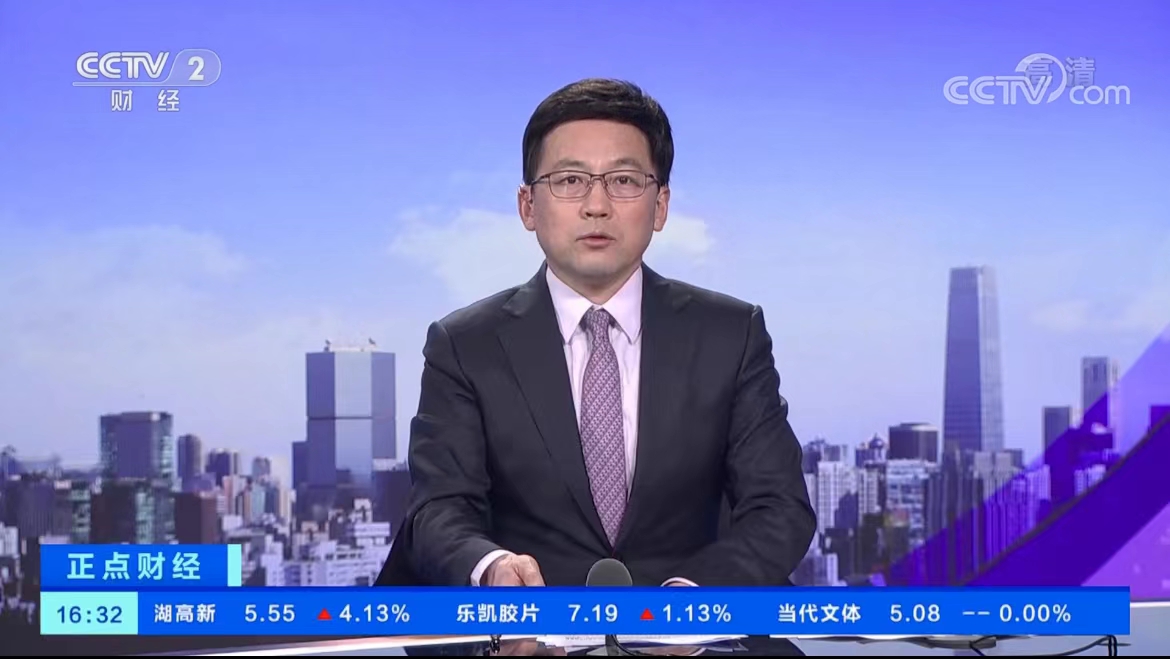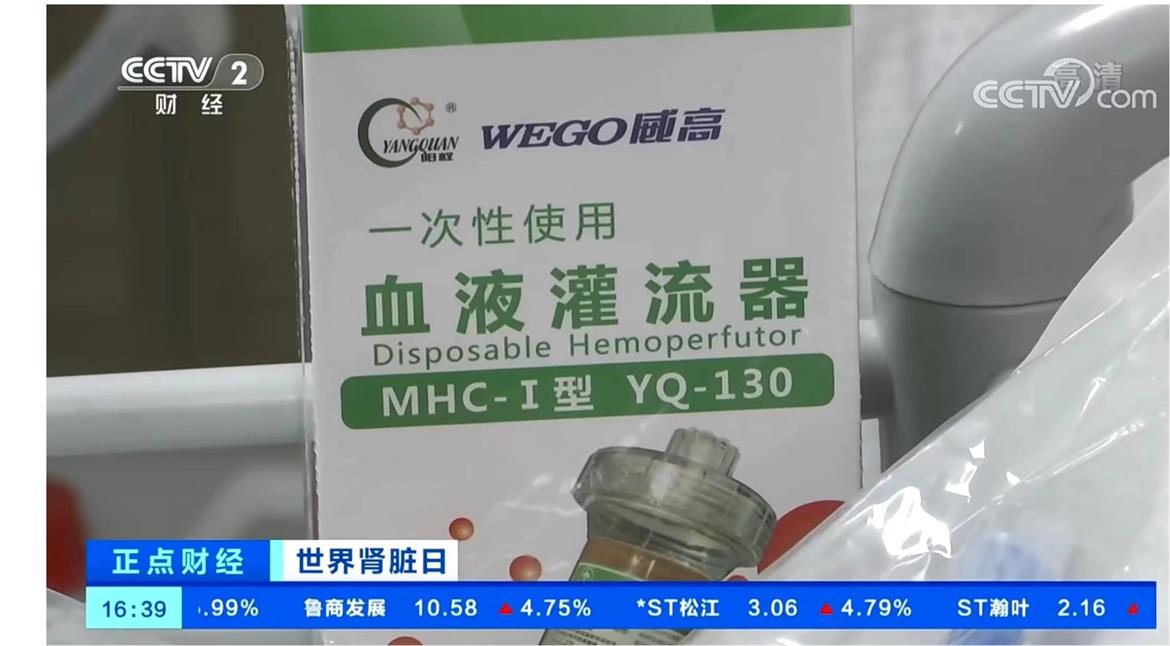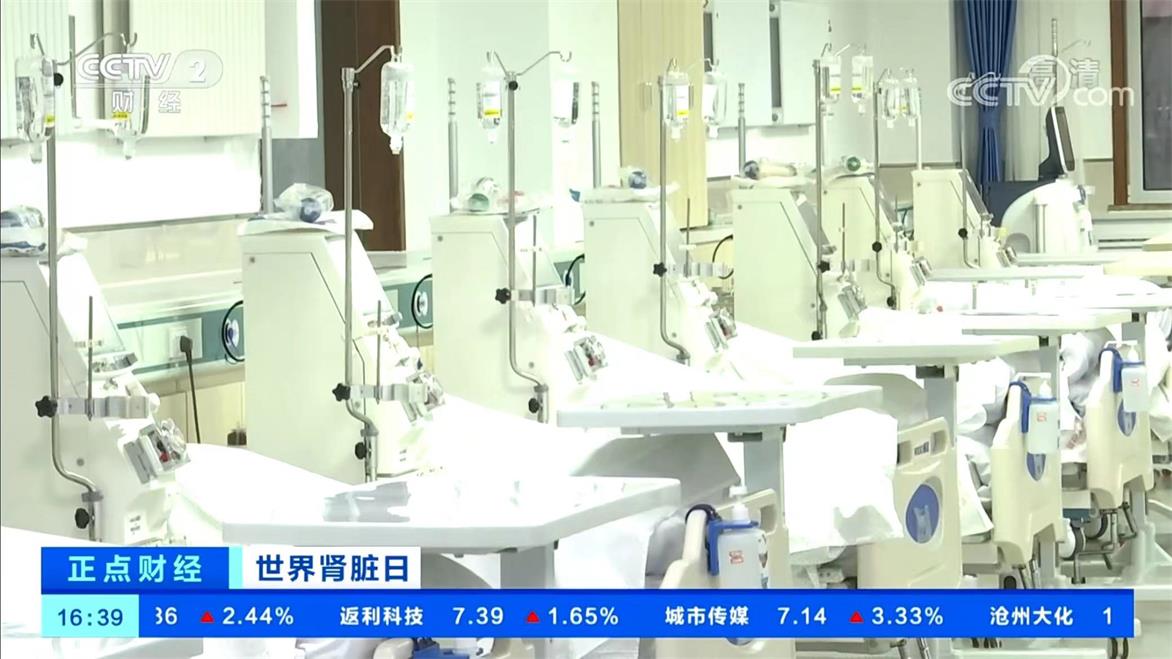On March 10, 2022, the 17th World Kidney Day, WEGO Chain Hemodialysis Center was interviewed by CCTV’s second set of “Punctual Finance”.
WEGO Chain Dialysis Center is the first batch of “Independent Hemodialysis Center” pilot units of the former Ministry of Health. After more than ten years of development, it operates four hospitals and nearly 100 independent hemodialysis centers in eight provinces across the country, and now has a top expert team and vascular access surgery team.
This CCTV interview fully demonstrated that WEGO Chain Dialysis Center solves the “blocking point” of development through intensive and standardized operation, and meets the diversified needs of patients through a new model of chain-based group development.
The number of patients with end-stage renal disease in China is increasing year by year
The demand for hemodialysis treatment is increasing
The latest epidemiological data show that chronic kidney disease (CKD) has become one of the major diseases that threaten people’s health. There are about 120 million patients in my country, and the prevalence rate is as high as 10.8%. With the aging of the social population and changes in lifestyle, the high incidence of metabolic diseases such as diabetes and obesity has also led to a gradual increase in the number of patients with renal failure. At present, hemodialysis is one of the important ways of renal replacement therapy, and the demand is increasing.
Due to the gradual increase in the proportion of medical insurance reimbursement, the number of patients with dialysis needs has increased year by year. Many hospitals, especially the hemodialysis departments of grass-roots county public hospitals, have experienced congestion with “more vehicles and fewer roads”. In the state of “hard to find a bed”, many patients even need dialysis in the early morning, and even more patients have to “seek far away” and spend more time, energy and financial resources to seek dialysis.
It is estimated that the number of patients with end-stage renal disease in China will exceed 3 million by 2030, and the hemodialysis treatment rate in China is less than 20%, which is far lower than the international level. The phenomenon of high prevalence but low dialysis rate means that the actual demand will continue to grow. Li Xuegang, deputy director of Nephrology Department of Weihai Municipal Hospital, said, “the explosive growth of dialysis patients in the past two years has overwhelmed many dialysis centers. Local finance is also under great pressure, and the contradiction between supply and demand is obvious. If it is impossible to rely solely on public hospitals, we must use independent dialysis centers, whether private or joint venture, to carry out this model”.
According to the epidemiological survey, the total number of patients with end-stage renal disease in China is about 1-2 million, but by the end of 2020, there are only 700000 registered dialysis patients and about 6000 dialysis centers. The demand for existing dialysis treatment is still far from being met (CNRDS).
Meng Jianzhong, vice chairman of the kidney disease special committee of China non-public medical association, said, “at present, these patients are just in need, because as long as they do not (dialysis) treatment, this patient will be in danger of life and death, which should be said to be a great challenge to our country”.
Difficult access to medical insurance, talent dilemma
Limited development of independent hemodialysis centers
Establishing an independent hemodialysis center to complement public hospitals is an important means to fill the shortage of medical resources. Since 2016, my country has begun to encourage social capital to enter the field of hemodialysis centers.
Establishing an independent hemodialysis center to complement public hospitals is an important means to fill the shortage of medical resources. Since 2016, my country has begun to encourage social capital to enter the field of hemodialysis centers.
Intensive and standardized operation to solve the “blocking point” of development
Development trend of chain group industry
Insiders said that how to reduce costs, provide high-quality services and establish institutional influence has become the core breakthrough point for the next development of independent hemodialysis center. How to solve the problems existing in the current development? What are the future trends of the industry?
The investment of independent hemodialysis center belongs to heavy asset investment, with high entry cost and high risk. The chain operation mode that can share the cost by taking advantage of scale has become the development trend in the industry. Yu Pengfei, the business director of WEGO chain dialysis center, introduced that “from dialysis machine to dialyzer, to pipeline liquid and perfusion device, as well as the medical and nephrology food and drugs at home of later patients, WEGO blood purification group has formed a complete set of treatment standards and consumables standards”.
At present, they further carry out independent R & D and production of hemodialysis product lines such as dialysis equipment and consumables, accelerate the coverage of the whole industrial chain, increase cost advantages, and benign and sustainable development also bring better treatment experience and quality assurance to patients.
On the basis of chain operation, WEGO hemodialysis center also carries out group layout, such as establishing nephrology hospital, providing kidney rehabilitation, health management and other kidney health integrated supporting facilities, and extending the scope of services. Many dialysis patients are chronically ill. Nephrology hospitals form a closed loop from kidney disease treatment to post disease management and nutrition and health management, forming a reputation among patients, and the quality of life of patients will be higher and higher. Through the layout of communities and remote areas, and the opening of national medical insurance policies in different places, it will be more and more convenient for patients to travel and work in different places, which solves the dilemma that patients cannot go out.
Moreover, through the sharing of regional medical resources, the safety and quality of medical services are improved, which is also conducive to government supervision and management.
Meng Jianzhong, vice chairman of kidney disease special committee of China non-public medical association and chief expert of WEGO chain dialysis center, said, “The state has also proposed the development of collectivization. The core is to use standardized means to manage patients more finely, and complete such a management improvement through chain informatization, chain management, talent training and intensive procurement, so as to achieve high-quality and high-speed development, and then better serve the people.”.
Public hospitals are mainly for the treatment of severe patients, early patients and micro dialysis patients. The social dialysis center is maintenance dialysis, which provides psychological, physiological, nutritional and overall guidance in the survival process of patients. If they cooperate with each other, they can not only reduce the economic burden of the country, but also reduce the burden on families.
Since 2016, the State Council, the National Health Commission and other departments have successively issued development policies to support and standardize the hemodialysis industry. Last year, favorable policies such as scientifically setting up dialysis centers, deepening volume procurement and medical insurance reform were mentioned in the “14th five year plan” medical security plans of many provinces and cities, including Jiangsu, Zhejiang, Shandong and Beijing. Starting this year, Beijing will expand the designated types of medical insurance and make it clear that independent hemodialysis centers can apply. Insiders said that with the gradual liberalization of the policy, the independent hemodialysis center will form a service system complementary to the quality and quantity of public hospitals in the future, so as to meet the diversified needs of patients with high-quality and multi-level services.
Post time: Apr-16-2022




